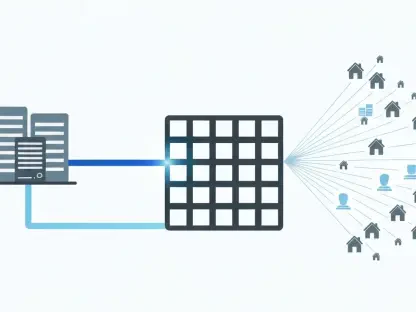Deciding whether to build or buy a Customer Data Platform (CDP) is a critical decision for enterprises, weighing factors such as technical expertise, industry-specific needs, and organizational readiness. Alongside this, the challenge of integrating Artificial Intelligence (AI) to unlock deeper insights and efficiencies further complicates the decision. Understanding which path to pursue and how to effectively implement these technologies can significantly impact an organization’s ability to manage and utilize customer data.
Building vs. Buying CDPs
Large enterprises, especially those within regulated industries like telecom, banking, insurance, and healthcare, often lean towards building their CDPs. Their substantial technical experience and familiarity with data management drive this choice, as these organizations require tailored solutions that adhere to strict regulatory standards. The ability to customize their CDPs allows these enterprises to build robust systems designed specifically to meet their individual data management and compliance needs.
However, smaller organizations with limited experience in large-scale data management often benefit more from purchasing packaged CDP solutions. These off-the-shelf options provide a straightforward path to harnessing and leveraging customer data without extensive technical knowledge. By opting for pre-built CDPs, smaller enterprises can quickly deploy solutions that integrate easily with their existing systems, allowing them to focus on optimizing customer interactions and business outcomes rather than on the technical intricacies of building a CDP from scratch.
Industry-Specific Trends and Use Cases
Vertical-specific factors heavily influence the build vs. buy decision, with highly regulated industries often favoring custom-built solutions to ensure compliance and maximize data utility. For CDPs to be effective, it is essential they address well-defined use cases such as customer acquisition, retention, cross-sell, upsell, and customer service improvement. Enterprises in regulated sectors, such as healthcare and financial services, must tailor their CDPs to meet specific regulatory requirements while ensuring efficient data handling and customer-centric processes.
Defining these use cases with clear goals, requisite data, and performance benchmarks is crucial for optimizing CDP effectiveness. Vince Jeffs from Pegasystems emphasizes the importance of mapping out detailed use cases to demonstrate clear business value, while Subra Krishnan from Lemnisk highlights the necessity of industry-specific considerations in use case development. Without well-defined objectives and data requirements, even the most sophisticated CDPs may struggle to deliver actionable insights and meaningful customer engagement.
Integration and Activation
Integration and activation remain key to maximizing the utility of CDPs. These platforms must seamlessly integrate with various systems such as real-time interaction management tools, email systems, marketing clouds, and journey orchestration engines. Effective integration ensures that customer data can be activated efficiently, enabling coherent and consistent customer experiences across different channels.
Some CDP vendors offer comprehensive solutions that include built-in integration capabilities, while others focus on providing robust connectors for external products. This flexibility allows organizations to choose CDPs that best align with their existing technological ecosystems. By connecting CDPs to other platforms, businesses can orchestrate customer journeys more effectively, enhancing personalization and engagement efforts.
Data Management Practices
Large organizations, with their comprehensive data systems, often prefer composable or hybrid CDPs. This approach allows them to leverage existing infrastructures, such as data warehouses, and integrate them with the CDP to create a more flexible and robust data management solution. However, this integration requires considerable configuration and technical expertise to ensure that the various systems work cohesively.
In contrast, smaller companies or those with less technical expertise benefit from implementing packaged CDPs, which simplify data management and deployment processes. These solutions do not demand extensive technical knowledge, providing a way for businesses to efficiently manage customer data. Effective data management involves not just data collection but also critical processes like identity resolution, insights generation, and real-time processing. High-quality data and a well-defined data model are essential for achieving desired outcomes.
Challenges and Opportunities in AI Integration
Implementing AI on top of CDPs introduces several challenges, including fragmented data, data quality issues, real-time processing bottlenecks, compliance concerns, and the need for organizational readiness and expertise. Enterprises need to ensure that the data feeding into AI algorithms is precise and consistent to enable effective functionality. Improper or poor-quality data can lead to inaccurate insights and ineffective decision-making.
AI promises significant advancements in how businesses can leverage customer data, yet organizations must be cautious about vendor promises. Enterprises should be aware of the labor and expertise required, particularly for generative AI, which remains in developmental stages for complex use cases. Without thorough organizational readiness and clear data management practices, the potential of AI can remain unfulfilled, posing significant implementation risks.
Addressing Organizational and Strategic Considerations
The successful adoption of new technologies, including CDPs and AI, requires clear organizational alignment, comprehensive training, and effective change management strategies. Enterprises need to ensure all stakeholders are aligned with the technology’s goals and processes to achieve a smooth implementation. Distinguishing the expertise required for different AI applications is vital, particularly as generative AI and other forms of AI demand varied skill sets and strategic approaches.
It is essential for businesses to have a clear understanding of their specific needs and ensure internal teams are well-prepared for the new technology. Ongoing support and maintenance are crucial to sustain the system’s effectiveness, and it is often beneficial to leverage vendor expertise when necessary. This approach helps ensure a robust support structure that can address any emerging challenges promptly.
Recommendations for Effective Implementation
Deciding whether to build or buy a Customer Data Platform (CDP) is a crucial decision for enterprises. This decision requires careful consideration of various factors, including the organization’s technical expertise, specific industry needs, and overall readiness. Adding to this complexity is the integration of Artificial Intelligence (AI), which can reveal deeper insights and drive greater efficiencies.
Choosing the right path, whether to build or buy, and then effectively implementing these technologies, can profoundly affect an organization’s ability to manage and harness customer data. It’s not just about making a decision; it’s about making the right decision that aligns with the company’s goals and capabilities.
Building a CDP in-house might offer customization tailored to the company’s unique needs but requires significant technical know-how and resources. On the other hand, purchasing an existing solution might provide a faster deployment but could lack the specificity certain organizations need.
Furthermore, the integration of AI into the CDP is essential. AI can automate processes, predict customer behavior, and personalize the customer experience. However, this integration must be managed carefully to ensure data accuracy and functionality.
In conclusion, the decision to build or buy a CDP, and its AI integration, is a pivotal choice that organizations must approach judiciously to optimize their customer data management and utilization.









